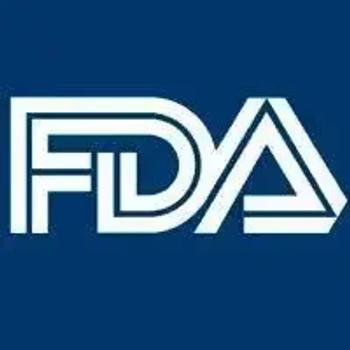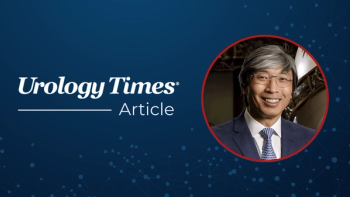
Adjuvant pembrolizumab continues to show DFS, OS benefits for ccRCC at 5-year assessment
Key Takeaways
- Pembrolizumab shows significant OS and DFS benefits in ccRCC, with a 72-month OS rate of 86.1% versus 79.4% for placebo.
- DFS benefits are more pronounced in subgroups with sarcomatoid features and high tumor grades, although not all were statistically significant.
"These long-term results continue to support [pembrolizumab's] use as a standard of care for patients at increased risk of recurrence," says Naomi B. Haas, MD.
Adjuvant treatment with pembrolizumab (Keytruda) continued to show consistent overall survival (OS) and disease-free survival (DFS) benefits compared with placebo for patients with clear cell renal cell carcinoma (ccRCC), according to a landmark 5-year analysis of the phase 3 KEYNOTE-564 study (NCT03142334) presented at the
At the 5-year analysis, the median DFS was not reached nor where either ends of the 95% confidence interval (CI) for those receiving pembrolizumab compared with 68.3 months for those in the placebo group (HR, 0.71; 95% CI, 0.59-0.86). The 72-month OS rate was 86.1% in the pembrolizumab arm compared with 79.4% in the placebo group. The median OS was not yet reached in either arm (HR, 0.66; 95% CI, 0.48-0.90).
"Pembrolizumab is the only adjuvant therapy in RCC to improve overall survival," lead investigator Naomi B. Haas, MD, Abramson Cancer Center, University of Pennsylvania, said during a presentation of the results. "These long-term results continue to support its use as a standard of care for patients at increased risk of recurrence."
In the study, 994 patients were randomly assigned to received pembrolizumab (n = 496) or placebo (n = 498). At the analysis, the median follow-up time was 69.5 months (range, 60.2-86.9) with all patients having completed or discontinued the study 3 years prior to the survival analysis. Adjuvant treatment in the study was planned for 17 cycles, with a median treatment duration of 11.1 months. Pembrolizumab and the matched placebo were administered at 200 mg intravenously every 3 weeks.
Patients were enrolled into prespecified risk subgroups based on their risk of recurrence. Those with sarcomatoid or pT2 grade 4 or those with any grade pT3 with N0 M0 were considered intermediate-high risk of recurrence (n = 855). Those with pT4 of any grade, N0, M0 or any pT and grade with node positivity and M0 were considered high risk (n = 77). The study also enrolled those with no evidence of disease (NED) following nephrectomy and/or metastasectomy but with limited metastases (M1; n = 57).
The 72-month DFS rate was 58.5% with adjuvant pembrolizumab compared with 48.7% for those in the placebo group. For those with sarcomatoid features (n = 111), the HR for DFS was more pronounced with pembrolizumab at 0.56 (95% CI, 0.33-0.96) whereas for those without this characteristic (n = 829) the HR was 0.75 (95% CI, 0.60-0.92). The DFS benefit with pembrolizumab was also more pronounced in those with a tumor grade of 4 (HR, 0.65; 95% CI, 0.46-0.93) and in those with M0 high-risk disease, although the latter was not statistically significant (HR, 0.61; 95% CI, 0.35-1.08). Those with M1 NED had an HR of 0.48 favoring pembrolizumab (HR, 0.48; 95% CI, 0.25-0.92). In the intermediate-high risk group, the HR was 0.75 (95% CI, 0.61-0.93).
Similar trends were observed in the OS subgroups as in the DFS analysis. For those in the M1 NED risk category, the HR for OS was 0.36 favoring pembrolizumab (95% CI, 0.11-1.18). In the M0 high risk group, the HR was 0.86 favoring pembrolizumab (95% CI, 0.37-1.98). Both of these subgroup analyses were not statistically significant. In the M0 intermediate-high risk group, the HR for OS was 0.65 favoring pembrolizumab (95% CI, 0.46-0.92). The HR for OS was similar in those with sarcomatoid features present (HR, 0.67) and absent (HR, 0.64).
There were 171 and 226 patients with documented recurrence, in the pembrolizumab and placebo group, respectively. The subsequent therapies for these patients frequently consisted of systemic therapy alone (42.7% and 44.2% for pembrolizumab and placebo, respectively). This was followed by systemic therapy plus surgery or radiation (21.6% and 23.9%, respectively). The most common systemic therapies were VEGF/VEGFR inhibitors (59.1% and 58.8%, respectively). In the pembrolizumab arm, 28.7% of patients received a subsequent PD-1 or PD-L1 therapy vs 48.2% in the placebo group.
There were 19.3% of patients in the pembrolizumab arm and 13.3% in the placebo group who received subsequent surgery/radiation therapy but no systemic therapy. Additionally, there were 16.4% of patients in the pembrolizumab arm and 18.6% in the placebo group who did not receive subsequent therapy after recurrence.
Adverse events (AEs) were similar with the longer assessment, with many of the rates being the same. The median duration of any grade 3 to 5 AE was 39 days in the pembrolizumab group and 36 days in the placebo group. "No new serious treatment-related AEs were reported after 3 or more years," said Haas.
Treatment-related AEs occurred in 79.1% of those in the pembrolizumab group compared with 53.0% in the placebo arm. The rate of treatment-related grade 3/4 AEs was 18.6% with the PD-1 inhibitor and 1.2% with placebo. Treatment-related serious AEs were seen in 11.9% of those treated with pembrolizumab and for 0.2% of those in the placebo group. Immune-mediate AEs and infusion reactions were experienced by 36.7% of patients in the pembrolizumab group and for 7.3% of those in the placebo arm.
Based on earlier data from the KEYNOTE-564 study, the FDA approved pembrolizumab as an adjuvant treatment following nephrectomy or metastasectomy for patients with intermediate-high or high-risk RCC in November 2021. The approved dose is 200 mg every 3 weeks or 400 mg every 6 weeks until disease recurrence, unacceptable toxicity, or up to 12 months.
REFERENCE
1. Haas NB, Powles T, Tomczak P, et al. Five-year follow-up results from the phase 3 KEYNOTE-564 study of adjuvant pembrolizumab (pembro) for the treatment of clear cell renal cell carcinoma (ccRCC). J Clin Oncol. 2025;43 (suppl 17; abstr 4514). Doi: 10.1200/JCO.2025.43.16_suppl.4514
Newsletter
Stay current with the latest urology news and practice-changing insights — sign up now for the essential updates every urologist needs.















